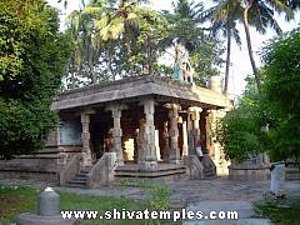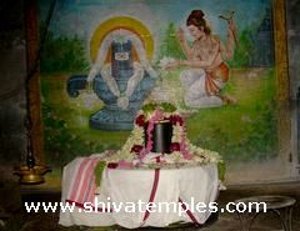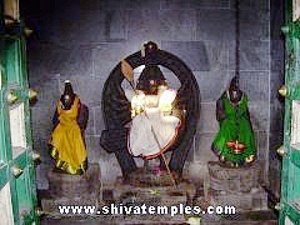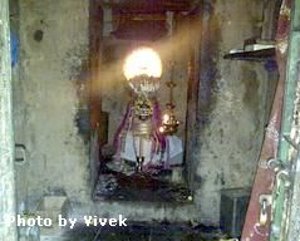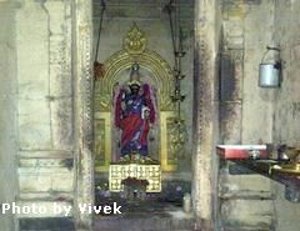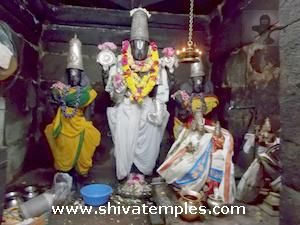Tirunaavaleswarar Temple, Tirunaavalur
Location: Tirunaavalur
Deity known as: Tirunaavaleswarar, Bhaktha Janeswarar
Female Deity: Sundaranayaki, Manonmani Ammai
Pathikam: Sundarar - 1
Gallery - Tirunaavaleswarar Temple
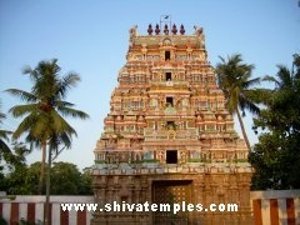
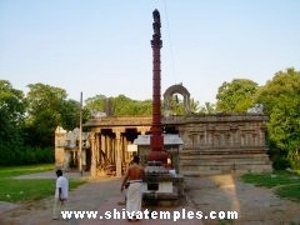
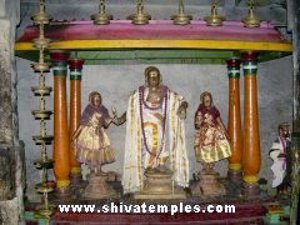
How to Reach
This temple is located about 25 km from Villupuram. While travelling from Villupuram towards Ulundurpettai, reach the Thirunavalur Panchayat Union Office, located just before the Kedilam bridge. A branch road opposite to the Panchayat Office, leading towards Panruti (about 2 km), takes you to the Thirunavalur temple. The temple can also be reached directly from Panruti.
Temple Address
Tirunaavalur
Tirunaavalur Post
Ulundurpettai Taluk
Villupuram District
PIN 607204
Temple hours
Morning: 6:00 AM - 12:00 PM
Evening: 4:00 PM - 8:00 PM
Temple Layout and Architecture
Birthplace of Sundarar
Situated on the northern bank of the river Ketila, this temple features a majestic five-tiered Rajagopuram. It is renowned as the birthplace of Sundaramurthy Nayanar. Adjacent to the Rajagopuram, on the left-hand side, is a beautiful depiction of Sundarar along with his consorts, Paravai Nachiyar and Sangili Nachiyar. In this depiction, a white elephant stands before them, while Sundarar is shown holding a rhythmic instrument. According to legend, when Sundarar ascended to Kailasha, he did so upon a white elephant; hence, he is traditionally represented seated on an elephant.
Temple Complex
The courtyard beyond the gateway features an armoured Dwajasthambam, Balipeetam, and Nandi, offering a grand and majestic prelude to the temple’s inner precincts. The Kodimara Vinayakar, known for his captivating beauty, is worshipped here as Sundara Vinayakar. In the second prakaram, devotees can admire the well-preserved Utsava Murthis of the four Nayanmars, Sundarar with his two consorts, Nataraja, Sivakami, Vinayaka, and Muruga with Valli and Deivanai. The presiding deity, Bhakta Janeswarar, enshrined in a small sanctum facing east, is illuminated by the rays of the sun from the 23rd to the 27th day of the Tamil month of Panguni, an awe-inspiring celestial phenomenon.
Sculptures and Deities
The prakaram is adorned with beautifully arranged sculptures of various deities and revered figures, including Polla Pillaiyar, Sekkizhar, the Four Nayanmars, the Sixty-three Nayanmars, Valampuri Vinayaka, Somaskanda, Arumuga, Yugalingam, and Gajalakshmi. The outer wall of the sanctum features intricate carvings depicting episodes from the life of Chandesura — showing him milking a cow, his father climbing a tree, him performing Thirumanjanam, and the scene where he cuts off his father’s feet and finally receives the grace of God Shiva. These sculptures vividly narrate the devotion and divine union of Chandesura.
Unique Features
Opposite the Navagraha Sannidhi stands the Sukra Lingam, which is believed to have been worshipped by Shukra, the planetary deity associated with Venus. Special pujas are performed to this Lingam every Friday, a day considered auspicious for Venus worship. Interestingly, while the idol of Surya, the Sun God, in most Navagraha shrines faces east, in this temple, Surya faces west, towards the Moolavar, making it a distinctive feature of this shrine. Additionally, there is a sannidhi for Bhairava, further enhancing the spiritual and sculptural richness of the prakaram.
Sundaranayaki Temple and Sthala Vruksham
Sundaranayaki (Manonmani), the divine consort, resides in a separate shrine facing east. A beautifully designed pillared mandapam stands before this sannidhi, enhancing its grace. True to Her name, Sundaranayaki is depicted in a standing posture with four divine hands, radiating beauty and compassion. On the northern side of the circumambulatory path stands the Sthala Vruksham, the Naaval (Jamun) tree, from which the town derives its name — Navalur. This sacred tree is associated with the star Rohini, and it is considered highly auspicious for devotees born under Rohini Nakshathira to visit and offer prayers here on that day.
Dakshinamurthy
Dakshinamurthy is depicted in a standing posture before a bull (Rishabam), with his right hand resting on the bull and a manuscript held in his left hand, symbolizing divine wisdom and guidance.
Temple Significance and Legends
Mahavishnu and Narasimha Avatar
Hiranyakashipu, the father of Prahlada, was infamous for his relentless persecution of the Devas, who ultimately sought refuge in Maha Vishnu to escape his tyranny. Blessed with a powerful boon from Brahma, Hiranyakashipu considered himself invincible — for the boon decreed that no man, god, or animal created by Brahma could kill him. Moreover, he could not meet his end by any weapon, during the day or night, in heaven or on earth, or inside or outside his dwelling.
In order to vanquish Hiranyakashipu, Maha Vishnu first sought the divine blessings of Bhakta Janeswarar at Tirunavalur, from whom He received the necessary powers. Empowered by this grace, Vishnu manifested as Narasimha, the half-man, half-lion incarnation, and emerged from a pillar to slay the tyrant Hiranyakashipu, thereby restoring righteousness and protecting His devotee Prahlada.
Within the temple premises, on the northern side of the prakaram, lies a separate east-facing shrine dedicated to Maha Vishnu. Enshrined here is a majestic 6-foot idol of Varadaraja Perumal, accompanied by His divine consorts Sridevi and Bhoodevi. This sannidhi, set on an elevated platform, is fronted by two mandapams, accessible through a short flight of steps. Directly opposite the shrine stands Garudan, the celestial mount of Vishnu, whose presence enhances the sanctity and grandeur of this sacred ensemble within the temple complex.
Tirupugazh Sthalam
The 14th-century Tamil poet Arunagirinathar, famed for Thiruppugazh, visited Tirunavalur and composed hymns in praise of Lord Muruga. One such song in the Thiruppugazh collection celebrates the east-facing Muruga at Tirunavalur, depicted in a standing posture with four merciful hands, accompanied by His two consorts, Valli and Deivaanai.
Sacred Water Bodies
The temple is graced by two sacred water bodies: Ketila and Gomukhi. The Ketila River lies about 1 km to the south of the town, while Gomukhi is situated to the west of the temple.
Sundarar's Pathikam
The hymn (*pathikam*) composed for this temple by Sundarar is recorded in the Seventh Tirumurai.
More Gallery
